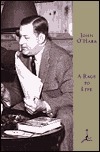What do you think?
Rate this book


705 pages, Hardcover
First published January 1, 1949
The man was almost completely bald, darkly tanned and with large, strong teeth. He was slender, sparsely built, and he appeared to be shorter than he was. He was wearing a Norfolk jacket, white flannels, white buckskins (now grass-stained), a soft white shirt with a gold safety-pin in the collar and a striped necktie… He was forty, a friendly, unsuspicious man, accustomed to being liked. He had a long history of regular meals, none ever missed except by choice, and of good digestion and fifteen thousand baths.
The woman beside him on the steps was in a blue-and-white muslin Red Cross canteen uniform. She was slightly taller than the fashion of the day and would have been still taller if she had not been wearing “sensible” heels. At first she seemed to be achieving chic without departing from strict uniform, and with no jewelry but a plain gold wedding band and a Tiffany-setting engagement ring, but on her wrist was a man’s watch-chain, wrapped twice around and with a small collegiate charm dangling from it, and under the band of her nurse cap her widow’s peak was showing, and it directed attention down to her black-brown eyes and her mouth, her mouth and her black-brown eyes. She was thirty-four years old, and they were Mr. and Mrs. Sidney Tate.
“Will you listen, please?”
“Oh, for God’s sake, go ahead. Get it over with. Is this supposed to be Catholic confession? Tell your sins and go out and do them all over again, the way you people do?”
“A lady doesn’t make insulting remarks about a man’s religion.”
“A lady? What do you know about a lady? Where would you ever learn about a lady? Have you ever seen one? You contemptible son of a bitch, you wouldn’t know a lady if you saw one.”
“Yes I would. You’re a lady, and probably you’re acting like one.”
